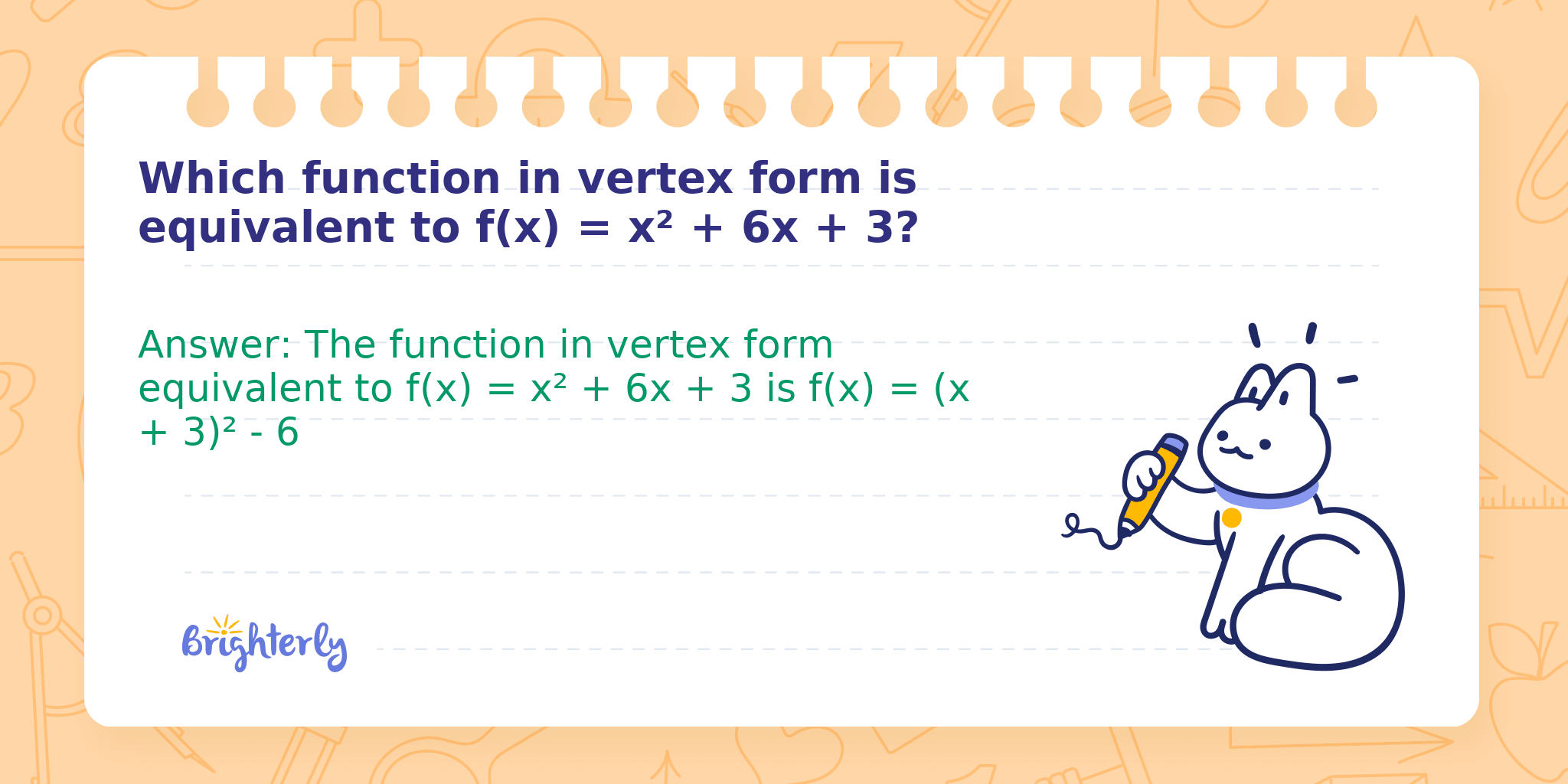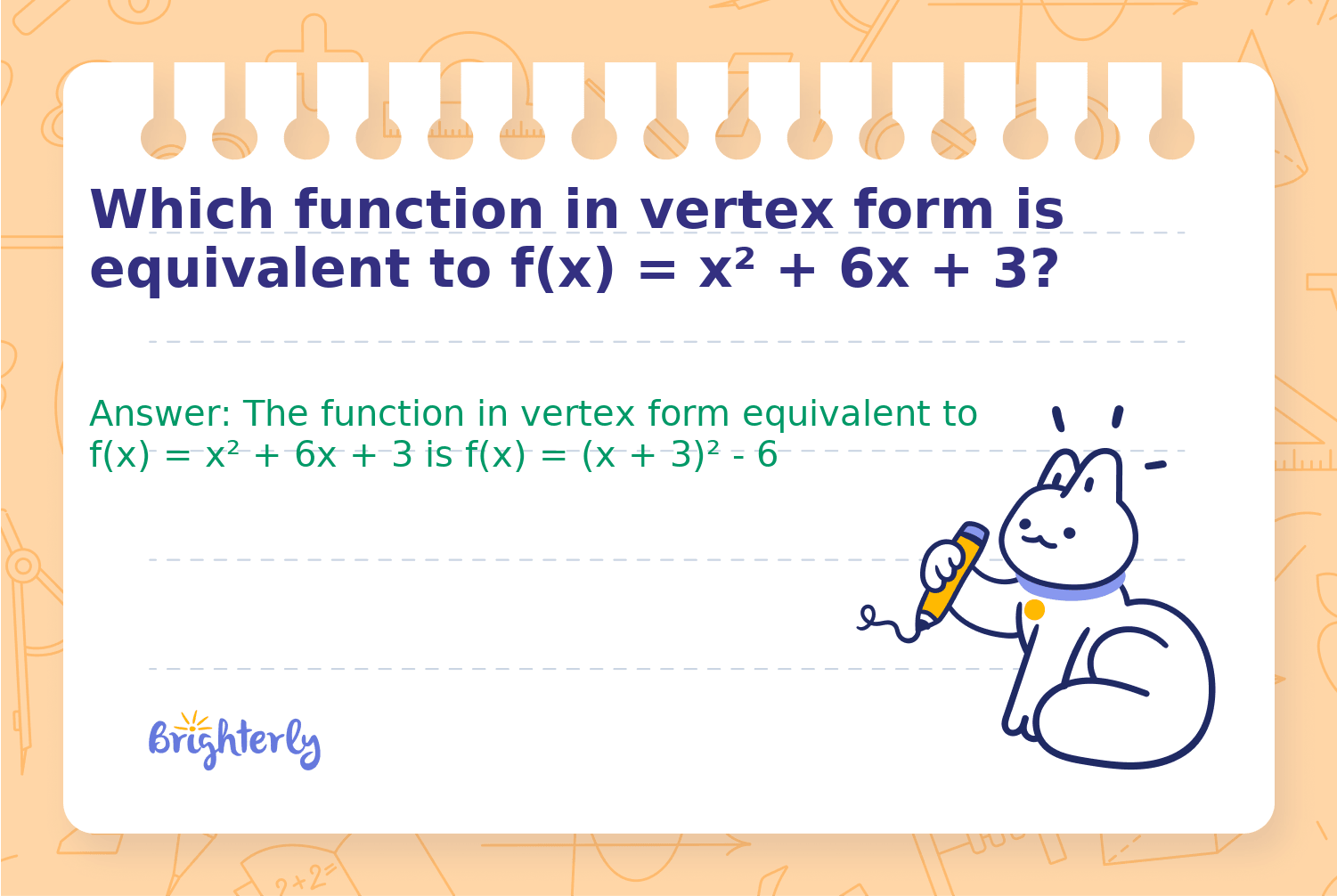
Reviewed by Rachelle Bencio Yu
Which function in vertex form is equivalent to f(x) = x² + 6x + 3?
Answer: The function in vertex form equivalent to f(x) = x² + 6x + 3 is f(x) = (x + 3)² - 6
To write a quadratic function in vertex form, we manipulate the standard form equation f(x) = x² + 6x + 3 using a method called completing the square. The vertex form provides insight into the vertex (h, k) of the parabola, highlighting where it reaches its minimum or maximum.
Methods
Math Tutor Explanation Using the Completing the Square Method
By rearranging the standard quadratic equation, we can complete the square and rewrite it in vertex form.
Step 1: Step 1: Start with the function f(x) = x² + 6x + 3
Step 2: Step 2: Take half of the coefficient of x (which is 6), square it, and add and subtract it inside the equation
Math Tutor Explanation Using the Vertex Formula Method
You can also identify the vertex using the formula h = -b/(2a) and substitute it back into the equation.
Step 1: Step 1: Find the value of h: h = -b/(2a) = -6/(2 × 1) = -3
Step 2: Step 2: Substitute x = -3 into the original function to find k: k = (-3)² + 6(-3) + 3 = 9 - 18 + 3 = -6
Step 1:
Step 2:
Math Tutor suggests: Master Quadratic Functions in Vertex Form
Strengthen your understanding of converting quadratics to vertex form and related concepts with these helpful practice questions.
FAQ on Vertex Form of Quadratics
What is vertex form?
Vertex form of a quadratic is f(x) = a(x - h)² + k, where (h, k) is the vertex.
Why is completing the square useful?
Completing the square rewrites the quadratic so you can easily read the vertex and understand the parabola's shifts.
How do you find the vertex from standard form?
Calculate h = -b/(2a); substitute into the original equation for k.
Can all quadratics be written in vertex form?
Yes, any quadratic function can be rewritten in vertex form using completing the square.


